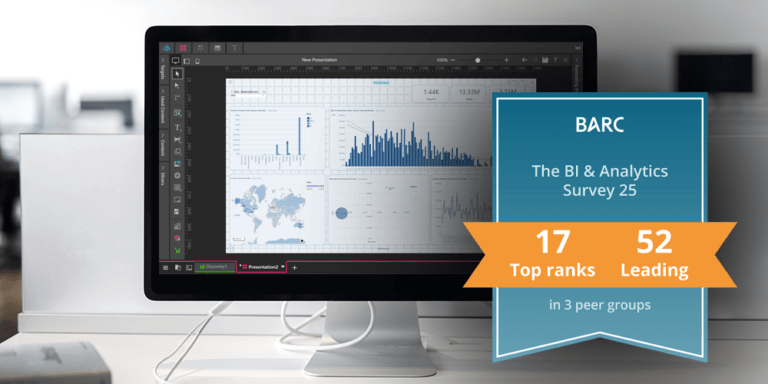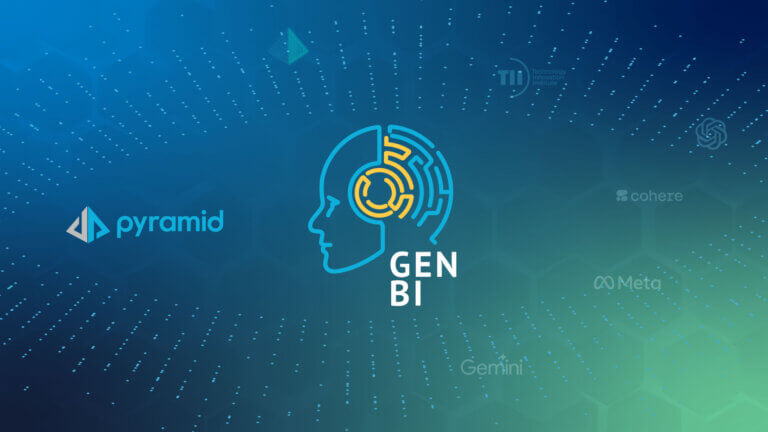AI isn’t a feature anymore, it’s the foundation for modern decision-making. Analytics tools have been promising transformation for ages, saying AI will accelerate the process. But, too often, those promises ended with slapping AI on top of elaborate and fragmented systems that were never designed for it. As artificial intelligence becomes a critical enabler of enterprise performance, organizations are realizing that legacy BI tools, no matter how smart their new features appear to be, can’t keep up.
To truly operationalize AI, the architecture has to be ready for it. It has to have been built for what’s next, not what has been.
From patchwork BI to unified intelligence
The average enterprise runs between four and ten different analytics tools across departments and use cases. While this may cover functional needs, it comes at a cost: duplicated metrics, inconsistent logic, and governance headaches. These fragmented environments not only drive up total cost of ownership (TCO), they undermine trust and decision velocity.
Layering AI onto this kind of stack is like installing a smart thermostat in a house with disconnected wiring. You may get localized automation, but you’ll never get systemic intelligence.
In contrast, unified analytics platforms give AI the context it needs to perform. When data preparation, modeling, and reporting are built into a single environment, AI can surface insight, optimize outcomes, and support decision-making across the full analytics lifecycle.
That’s the foundation for intelligence that scales.
Between platform and promise: bridging the AI gap
Many vendors promote AI capabilities, but without the architectural backbone, those features often fall short in practice. You might get smart visuals or chatbot summaries, but the insights they surface are disconnected from core business logic or governed data models. That leads to shallow outputs, inconsistent results, and ultimately, limited adoption.
AI-native architecture addresses this gap. By aligning AI with centralized models, access policies, and reusable logic, organizations can ensure that what the AI delivers is accurate, relevant, and actionable. It’s not about more insight, it’s about getting the right insight, delivered to the right person, at the right moment in the workflow. That’s the true value of integrating artificial intelligence across the data journey.
AI-native vs. AI toppings
There’s a difference between adding AI to an existing system and truly integrating it.
AI-native platforms are designed with the most advanced technologies in mind from the beginning. In these environments, AI capabilities don’t just live in a chatbot. They power core functions like querying, narrative generation, discovery, and optimization.
Natural-language query tools, like GenBI, help users interact with the data in their own words. AI-generated summaries bring clarity to complex reports. Embedded insight detection flags anomalies or outliers automatically. These aren’t just nice-to-haves, they’re expected functionality in an intelligent enterprise.
Compare that to add-on AI, where machine learning features are sprinkled on top of legacy frameworks. These tools often struggle with data consistency, performance, and security. They can’t access the full context of the analytics workflow, limiting their usefulness and reliability.
In an AI-native design, intelligence isn’t bolted on, it’s embedded across the platform, powering querying, storytelling, and decision workflows by design.
Why Gartner recognizes platforms built for AI
In the 2025 Gartner Magic Quadrant, those companies named as Visionaries weren’t just vendors with bold ideas—they were platforms making AI usable, reliable, and scalable across the enterprise.
Gartner’s Critical Capabilities report reinforced that recognition by ranking platforms based on how their architecture and features work to support actual decision-making.
Pyramid earned its place at the top because it embeds AI across decision workflows. Its architecture supports natural-language querying, dynamic storytelling, semantic modeling, and more, all within a unified, governed environment.
That kind of architectural coherence is what turns AI from a tool into a strategy.
Built for what’s next
The next generation of analytics isn’t about dashboards, shiny features or beautiful pie charts. It’s about decisions. Smarter, faster, more autonomous.
But to get there, AI can’t be an accessory. It needs an architecture that’s unified, extensible, and composable by design.
Pyramid is one of the few platforms recognized for enabling that kind of future-ready analytics environment. In the age of AI, your architecture is your intelligence strategy, and getting it right has never been more important.
Get the 2025 Gartner Critical Capabilities report to learn how Pyramid’s AI integration puts us on top.












